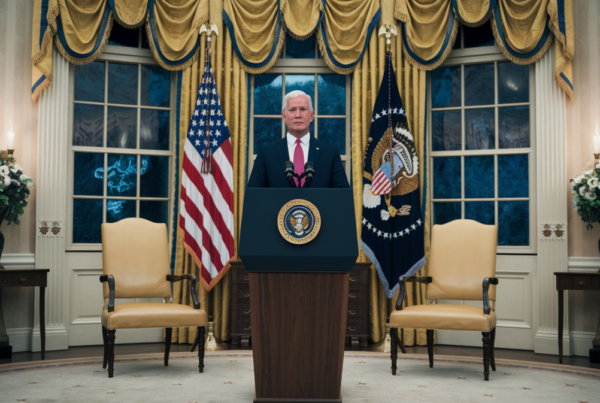Key Developments in the U.S.-EU Trade Agreement
On July 27, 2025, U.S. President Donald Trump announced a landmark trade agreement with the European Union, marking a significant shift in international trade dynamics. The deal, which imposes a 15% tariff on most European imports—including automobiles—represents a reduction from the previously proposed 30% tariffs. In return, the EU has committed to purchasing $750 billion worth of U.S. energy and investing an additional $600 billion in the U.S. economy.
The agreement has been hailed as a step toward stabilizing trade relations between the two economic powerhouses, though analysts caution that its long-term implications remain uncertain.
Market Reactions to the Trade Deal
The announcement triggered immediate optimism in global markets, with both U.S. and European indices posting gains. Here’s a breakdown of the market movements:
U.S. Markets
- Dow Jones Industrial Average: Futures rose by 180 points (0.4%).
- S&P 500: Futures increased by 0.3%.
- Nasdaq 100: Futures climbed 0.4%.
European Markets
- Stoxx Europe 600: Gained 0.4%.
- Germany’s DAX: Rose by 0.5%.
- Spain’s IBEX: Jumped 1.5%, leading regional gains.
The positive momentum reflects investor relief over the avoidance of a more aggressive tariff regime, which had been a source of market volatility in recent months.
Upcoming Events Shaping Market Sentiment
The trade deal sets the stage for a packed week in financial markets, with several high-stakes events on the horizon:
Corporate Earnings Reports
Over 150 S&P 500 companies are set to release quarterly results, including tech giants like Meta Platforms, Microsoft, Amazon, and Apple. These reports will provide critical insights into corporate health amid evolving trade policies.
Federal Reserve Meeting
The Fed’s two-day policy meeting, concluding on Wednesday, is under intense scrutiny. Investors are eager for signals about potential interest rate adjustments, particularly in light of recent inflation trends.
Economic Data Releases
- June PCE Index: Expected to show inflation rising to 2.4% year-over-year.
- July Jobs Report: Economists forecast the addition of 115,000 jobs.
These indicators will help shape expectations for the U.S. economy’s trajectory in the second half of 2025.
Investor Sentiment: Optimism with Caution
While the trade deal has buoyed markets, economists and analysts are tempering their enthusiasm. Key concerns include:
- The potential for inflationary pressures due to higher import costs.
- Uncertainty about the implementation and enforcement of the agreement.
- The broader geopolitical implications of the U.S.-EU trade relationship.
Social media platforms like Reddit and YouTube reflect this mixed sentiment, with users debating the deal’s merits and drawbacks. Some express hope for economic stability, while others remain skeptical about its tangible benefits.
Comparison: U.S. and European Market Reactions
| Market Index | Percentage Change | Key Drivers |
|---|---|---|
| Dow Jones Industrial Average | +0.4% | Trade deal optimism, strong earnings expectations |
| S&P 500 | +0.3% | Broad market rally, tech sector strength |
| Nasdaq 100 | +0.4% | Tech earnings anticipation |
| Stoxx Europe 600 | +0.4% | Relief over reduced tariffs |
| Germany’s DAX | +0.5% | Automotive sector rebound |
Conclusion: A Pivotal Moment for Global Trade
The U.S.-EU trade deal has injected fresh optimism into financial markets, but the week ahead will test its staying power. With earnings reports, Fed announcements, and economic data on tap, investors are bracing for potential volatility. While the agreement marks progress, its long-term success will hinge on execution and broader economic conditions.
As the world watches, the deal underscores the interconnected nature of global trade—and the delicate balance between cooperation and competition.







